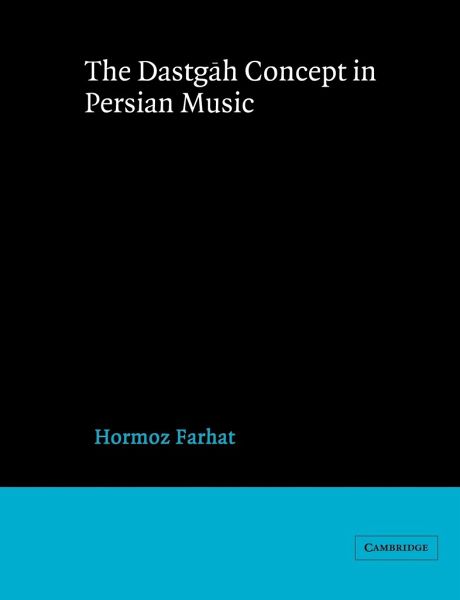
The Dastgah Concept in Persian Music
Versandkostenfrei!
Versandfertig in 1-2 Wochen
46,99 €
inkl. MwSt.

PAYBACK Punkte
23 °P sammeln!
The tradition of Persian art music embodies twelve modal systems, known as dastgahs. Each dastgah represents a complex of skeletal melodic models on the basis of which a performer produces extemporised pieces. The dastgahs revolve around unspecified central nuclear melodies which the individual musician comes to know through experience and absorption. It is a personal and elusive tradition of great subtlety and depth. Through extensive research, including interviews with leading musicians and recording over one hundred hours of music, Hormoz Farhat has unravelled the art of the dastgah. In his...
The tradition of Persian art music embodies twelve modal systems, known as dastgahs. Each dastgah represents a complex of skeletal melodic models on the basis of which a performer produces extemporised pieces. The dastgahs revolve around unspecified central nuclear melodies which the individual musician comes to know through experience and absorption. It is a personal and elusive tradition of great subtlety and depth. Through extensive research, including interviews with leading musicians and recording over one hundred hours of music, Hormoz Farhat has unravelled the art of the dastgah. In his study Professor Farhat analyses the intervallic structure, melodic patterns, modulations, and improvisations within each dastgah, and examines the composed pieces which have become a part of the classical repertoire in recent times.
Table of content:
Preface; Transliterations; Opening statement; 1. A brief historical perspective; 2. Intervals and scales in contemporary Persian music; 3. Musical concepts and terminology; 4. Dastgah-e Sur; 5. Dastgah-e Abuata; 6. Dastgah-e Dasti; 7. Dastgah-e Bayat Tork; 8. Dastgah-e Afsari; 9. Dastgah-e Segah; 10. Dastgah-e Cahargah; 11. Dastgah-e Homayun; 12. Dastgah-e Bayat-e Esfahan; 13. Dastgah-e Nava; 14. Dastgah-e Mahur; 15. Dastgah-e Rast (Rast-Panjgah); 16. Vagrant Guses; 17. Compositional forms; Closing statement; Notes; Selected Bibliography; Appendix.
Table of content:
Preface; Transliterations; Opening statement; 1. A brief historical perspective; 2. Intervals and scales in contemporary Persian music; 3. Musical concepts and terminology; 4. Dastgah-e Sur; 5. Dastgah-e Abuata; 6. Dastgah-e Dasti; 7. Dastgah-e Bayat Tork; 8. Dastgah-e Afsari; 9. Dastgah-e Segah; 10. Dastgah-e Cahargah; 11. Dastgah-e Homayun; 12. Dastgah-e Bayat-e Esfahan; 13. Dastgah-e Nava; 14. Dastgah-e Mahur; 15. Dastgah-e Rast (Rast-Panjgah); 16. Vagrant Guses; 17. Compositional forms; Closing statement; Notes; Selected Bibliography; Appendix.














